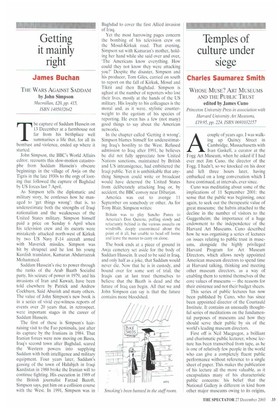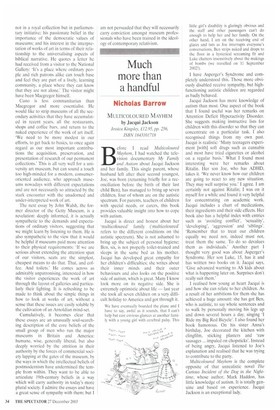Temples of culture under siege
Charles Saumarez Smith
WHOSE MUSE? ART MUSEUMS AND THE PUBLIC TRUST edited by James Cuno Princeton University Press in association with Harvard University Art Museums, 119.9.5, pp. 224. ISBN 0691032157 Acouple of years ago. I was walking up Quincy Street in Cambridge, Massachusetts with Ivan Gaskell, a curator at the Fogg Art Museum, when he asked if I had ever met Jim Cuno, the director of the Fogg. I hadn't, so we knocked on his door and left three hours later, having embarked on a long conversation which I have continued, at intervals, ever since.
Cuno was meditating about some of the implications of 11 September 2001: the sense that the public was beginning, once again, to seek out the therapeutic value of great museums; the hubris attached to the decline in the number of visitors to the Guggenheim: the importance of a huge endowment to the independence of the Harvard Art Museums. Cuno described how he was organising a series of lectures on issues relating to public trust in museums, alongside the highly privileged Harvard Program for Art Museum Directors, which allows newly appointed American museum directors to spend time at Harvard talking, thinking and meeting other museum directors, as a way of enabling them to remind themselves of the core values of museums — the reasons for their existence and not their budget sheets.
This series of public lectures has now been published by Cuno, who has since been appointed director of the Courtauld Institute. It contains an unusually thoughtful series of meditations on the fundamental purposes of museums and how they should serve their public by six of the world's leading museum directors,
First off is Neil Macgregor, a brilliant and charismatic public lecturer, whose lecture has been transcribed from tape, as he is one of relatively few people in the world who can give a completely fluent public performance without reference to a single sheet of paper. This makes the publication of his lecture all the more valuable, as it encapsulates many of his characteristic public concerns: his belief that the National Gallery is different in kind from other major museums owing to its origins,
not in a royal collection but in parliamentary initiative; his passionate helief in the importance of the democratic values of museums; and his interest in the interpretation of works of art in terms of their relationship to the universalising aspects of biblical narrative. He quotes a letter he had received from a visitor to the National Gallery: 'It's a place where ordinary people and rich patrons alike can touch base and feel they are part of a lively, learning community, a place where they can know that they are not alone.' The visitor might have been Macgregor himself.
Cuno is less comrnunitarian than Macgregor and more essentialist. He would like to strip museums of all the secondary activities that they have accumulated in recent years, all the restaurants, shops and coffee bars, and return to the naked experience of the work of art itself. 'We need to be more modest in our efforts, to get back to basics, to once again regard as our most important contributions the acquisition, preservation, and presentation of research of our permanent collections.' This is all very well for a university art museum, but can sound a touch too high-minded for a modern, consumeroriented audience, who approach museums nowadays with different expectations and are not necessarily so attracted by the stark encounter with the unadorned and under-interpreted work of art.
The next essay by John Walsh, the former director of the Getty Museum, is a revelation: deeply informed, it is actually sympathetic to the demands and expectations of ordinary visitors, suggesting that we might learn by listening to them. He is also sympathetic to the view that it would be helpful if museums paid more attention to their physical requirements: 'If we are serious about extending the attention span of our visitors, seats are the simplest, cheapest means to do that. That, and coffee. And toilets.' He comes across as admirably unpatronising, interested in how the visitor experiences the work of art through the layout of galleries and particularly their lighting. It is refreshing to be made to think about the simple things in how to look at works of art, without a sense that these issues are easily soluble by the cultivation of an Arnoldian mind-set.
Cumulatively, it becomes clear that these essays are an unusually soul-searching description of the core beliefs of the small group of men who run the major museums in Britain and America: humane, wise, generally liberal, but also deeply worried by the attrition in their authority by the forces of commercial society lapping at the gates of the museum, by the ways in which the intellectual beliefs of postmodernism have undermined the temple from within. They want to be able to articulate 19th-century beliefs in a way which will carry authority in today's more plural society. I admire the essays and have a great sense of sympathy with them; but I am not persuaded that they will necessarily carry conviction amongst museum professionals who have been trained in the ideology of contemporary relativism.



























































 Previous page
Previous page